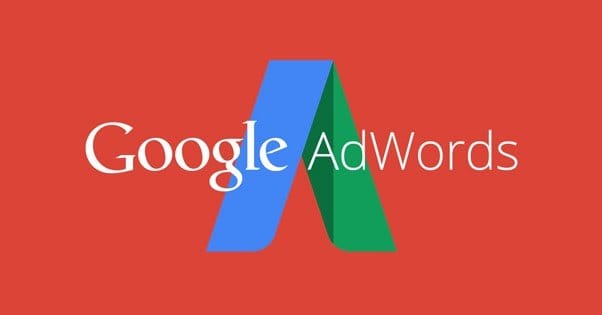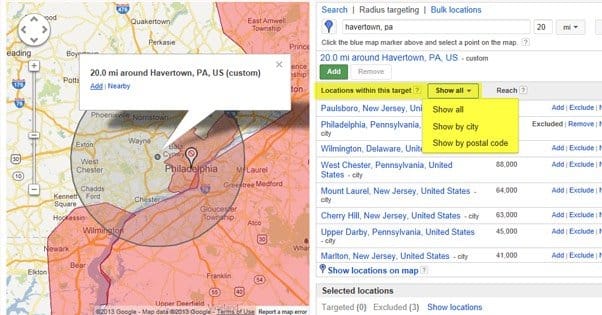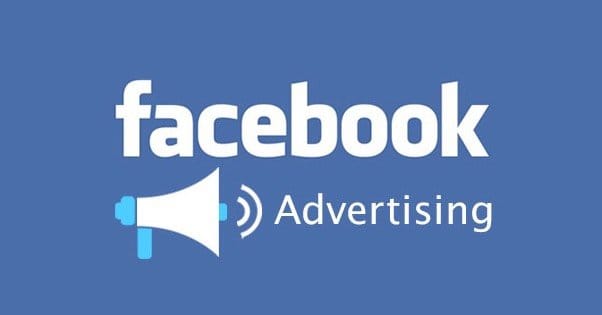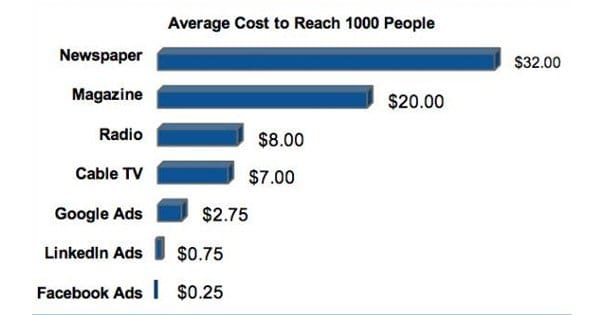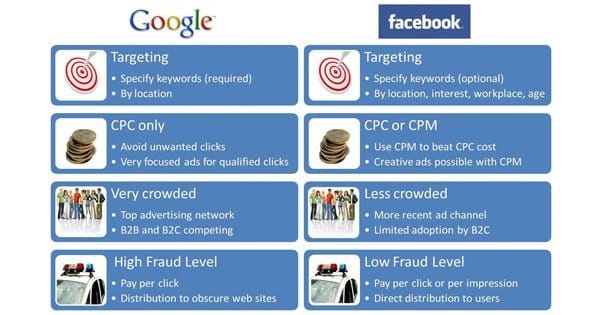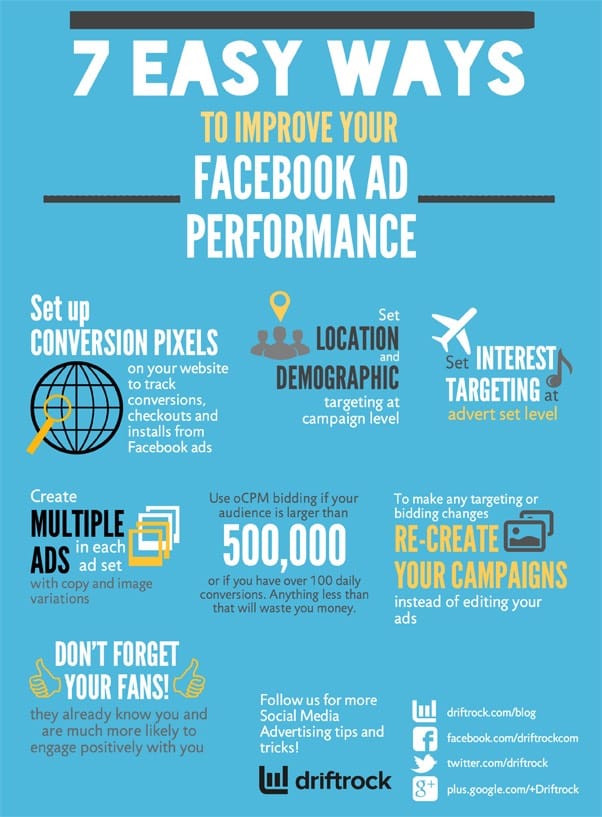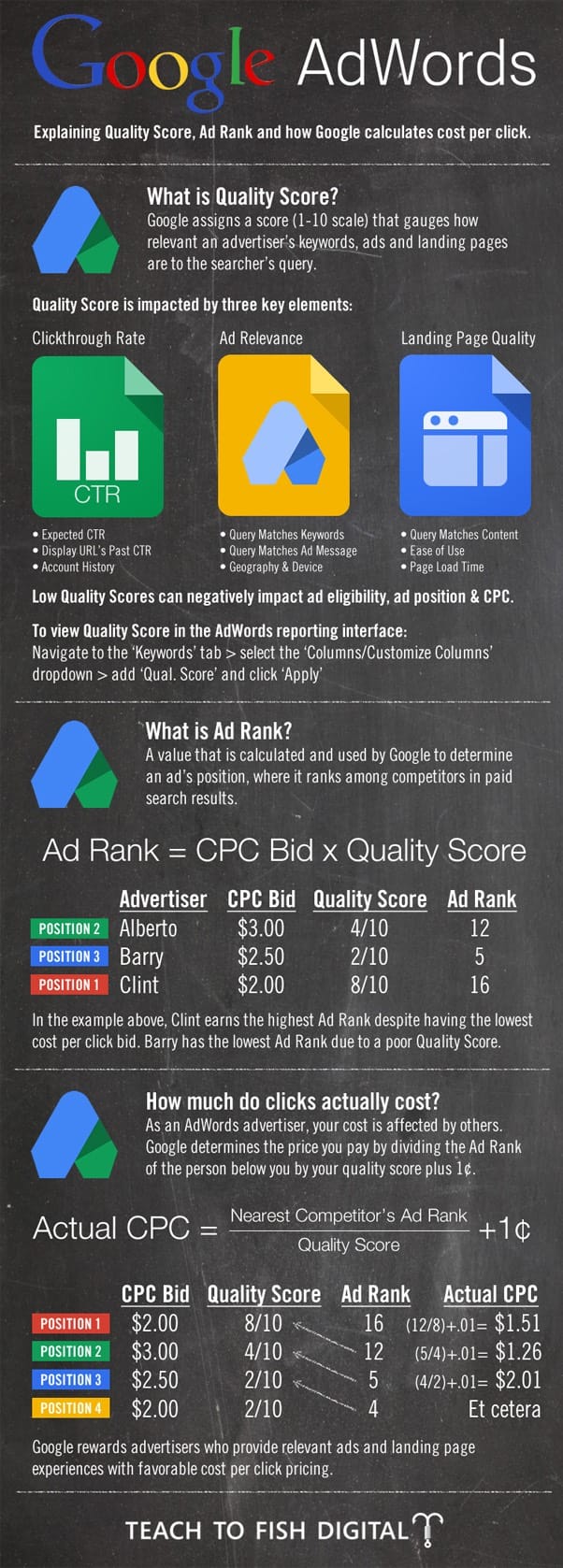 Written by ContentPowered.com
Written by ContentPowered.com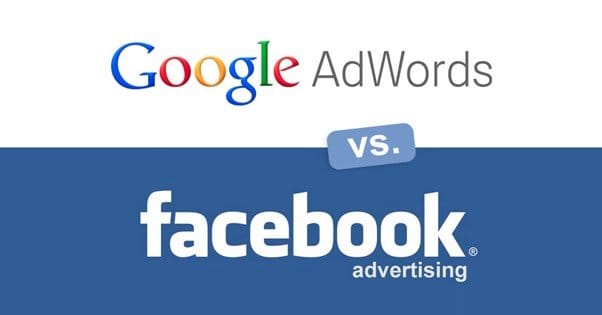
Facebook and Google are the two biggest advertising platforms online today, so it’s natural that the average marketer wants to know which one is better. Now, I intend to give you a lot of information in this post, but I’ll say right now up front that the answer is “both of them.” They both excel in different ways, and should be used in conjunction with one another to supplement a dedicated organic marketing plan. When used together, these three pillars create the foundation of a very strong online presence.
Google Ads
Google has a lot of different types of ads you can run. In general, they will be PPC, but PPV options also exist. It’s generally recommended that you use PPC in pretty much every instance. They’re more expensive, yes, but they’re about a billion times more effective.*
*Your actual effective rates may vary.
Targeting: Google ads are targeted using a combination of some basic user data factors and, more importantly, the keyword of the search query the user runs. This is for ads that show on the Google search results page. There are other ads that show on websites, served by Google; this is the Display Network. Display Network ads can be much more varied and include graphical banners as well as textual ads. They are likewise mostly limited to targeting factors based on keywords relevant to the site. You have very little control over the type of people who see your ads; just the topic they seem to be interested in based on the websites they visit.
Locations: Google ads are displayed in one of two places; the search results page or pages running AdWords as part of the display network.
Search results ads are always text based and formatted to look like normal search results. You’ve seen these before; they sit at the top of the search results and are highlighted in yellow. There are also often sidebar ads, blocks of smaller text ads.
Ads in the display network run a wide range of possible options. There are text units and graphical units of a wide range of sizes. You can see a guide for the various options here. Keep in mind that there are more options beyond just the ones that Google identifies as the top performing iterations, so you can explore variations at your leisure.
Costs: Google ads tend to be quite expensive, though exactly how expensive will depend on the niche. Some low-level, low-competition CPC ads can run you around 70 cents per click. Meanwhile the higher competition, popular niches will end up charging you several dollars per click. Some of the highest value niches have advertisers willing to pay upwards of $20 or even more per click, because a single conversion can cover an entire ad campaign.
You can finagle variables to get all the way down to penny clicks, but it’s really not recommended. By doing so, you are sacrificing any semblance of quality with your traffic, and you will be virtually guaranteed to be losing money. The only possible upside to this is that you won’t be losing a lot of money a penny at a time. You do, however, sacrifice your quality score and make it increasingly difficult to return to high quality traffic without serious work.
Facebook Ads
By contrast to Google, Facebook ads are almost all PPC by default. There are a couple of PPV options in the CPM and OCPM systems, but we’ll get to that later. Facebook ads have the capacity to reach millions of people, or to reach a small, targeted audience of only thousands. How you use them is up to you.
Targeting: Facebook ads are not targeted towards the content the user is looking for. Rather, they are targeted towards who the user is. Facebook ads can target based on all sorts of demographic information, including income level, education, geographic location, and a lot more. They can also target based on interests, and what Facebook considers an “interest” is anything a Facebook user can like, which in turn is anything someone else has made a page for. This means there are hundreds of thousands of possible interest categories to filter through.
Locations: Unlike Google, Facebook ads are strictly limited to Facebook itself. There is no equivalent to the Display Network. That said, they can show up in several different places on Facebook. The primary two are sidebar ads and news feed ads, though there are also specific mobile ads and app ads as well.
Sidebar ads are traditional ads with an image and some text, in a small rectangular space. They tend to be the least effective type of ads, but they are also by far the cheapest to run, so it can be worthwhile to experiment with them. When you’re in a situation where one single conversion can allow you to turn a profit, it can be very worthwhile to give them a shot.
News feed ads are ads that are designed to look just like organic posts. In fact, with the boost post option, organic posts can be converted directly into ads. These tend to have widely variable performance, depending on the content, context, and targeting.
Costs: Facebook ads tend to be significantly cheaper than comparable Google ads. You can expect to be paying less than $1 per click in most cases. However, this depends a lot on targeting. Some demographics and targeted audiences will be more expensive than others. You can target audiences with cheaper costs, or audiences with more ideal demographics, and find a balance in costs. Generally, your total cost is going to rely on your volume more than other factors, however.
A note here about Facebook cost optimization. I mentioned CPM and OCPM earlier. CPM is pay per view ads, while OCPM is optimized versions of the same thing. This optimization tells Facebook to prioritize showing your ads to specific people, so that people more likely to click through are seeing your ads more often. There is a similar system in place for CPC ads, which is picking an ad objective.
Ad objectives include actions like “page likes” and “website clicks” but also allow you to shoot specifically for “website conversions” or “app installs” among other things. These objectives tell Facebook to prioritize people within your target audience who are more likely to do these things. Picking the wrong ad objective will make your ads generally more expensive, because you have to expose them to more people to get the objectives you want. This will also make them take longer to operate, generally lowering effectiveness overall.
A Closer Look at Differences
The first and most obvious difference between Facebook ads and Google ads is the way they target people at all. Google ads target users who are searching for something related to what you are targeting. It’s all about an action and an intent. A user wants to buy a flashlight and thus searches for flashlights; your flashlight website will appear and you can capture that traffic and attempt to convert it into a sale.
Facebook ads, in contrast, focus on awareness and audience building. You very rarely get a user from Facebook to click to a website, go through a process, and convert. Rather, you use Facebook ads to build your audience both on your blog and on your social media account. You get people who weren’t aware of what you do to become aware, and people who weren’t following you to follow you. From there, you can expose them to your marketing and your presence on a constant basis, which builds brand awareness.
This is good, because then the next time that user wants to buy something you sell, they have two options; they can search for it on Google, or they can think about brands they know that sell it and go to that brand directly. If they search it on Google, well; you should be using Google ads as well, which will then capture their intent via name recognition. If they think about brands, they will think of you, and visit your site.
The second major difference between Facebook and Google ads is the targeting available. This stems off intent; with Google, you want to capture people who are actively looking for something you can provide. With Facebook, you are looking to gather together the kinds of people who are likely to be converting in the future, or supporting your brand in other ways.
Cost is a huge difference; Google is very, very expensive, but that’s because it’s also very effective at turning a profit when you use it properly. Because it captures user intent, it hooks people in when they’re actively ready to spend money. Facebook, by contrast, is often very cheap, particularly in comparison. That’s because the initial monetary investment is just that; an initial investment. You then have to put in a lot of work building those users up to a point where they trust you and are willing to spend money on your brand.
This actually makes it quite difficult to compare the two advertising platforms in terms of cost for success. What you need to do with Google is easy; calculate how much you spend versus how much you make from the people coming in via those ads, and figure out how much you’re spending per customer. For Facebook, you have to do the same thing, but it’s much more difficult to actually gather the data to calculate it. You have to calculate based on Facebook as a whole, unless you’re using nothing but website conversion ads and have detailed tracking in place.
At the end of the day, you want a robust site with a lot of content. That content supports Facebook by allowing you to post frequently and stay visible with your audience. Then, when they’re in a position where they want to convert, you connect with them directly in their search via Google ads.
Tips for Success with Facebook Ads
Success with Facebook is difficult, though not for the reasons many people think. Facebook simply has so much competition for the attention of its users that it’s difficult to capture that attention for yourself. It takes constant dedication to both paid posting and organic posting.
- Rotate your ads often, especially any sidebar ads you run. After a user has seen an ad more than twice, they’re going to stop paying attention to it. A refresh with a new image or new creative, or both, will do wonders to keeping your audience interested.
- Try to segment your audience into as small a segment as possible, and target them as directly as possible. The more personalized your ads are, the more likely you are to capture their attention.
- Track plenty of information, but emphasize conversions as well as engagement. You can also track other indicators, like the cost per page like, the cost per lead, the demographics of your recently joined audience, and various individual forms of engagement.
- When using website conversion or direct sale advertising, restrict your targeting to just your audience. These are the people who are familiar with you, and are thus most likely to convert. By contrast, even friends of connections are unfamiliar and unlikely to convert.
- Consider occupation targeting. Often, your audience will be made up primarily of professionals in a certain field, even more so when your product is a specific niche business product. By targeting that occupation, you get a better initial audience.
- Consider refined geotargeting. I’m not just talking about limiting to the US, here; I’m talking about specific high-end districts in various cities if you’re selling a luxury item, for example.
Tips for Success with Google Ads
Google ads are more direct, but no less important to use properly. In fact, because they are so much more expensive than Facebook ads, you need to take them more seriously. You can’t just use Google ads for branding, because you stand to lose a lot of money if you fall into the wrong situation.
- Figure out specifically what it is that attracts the customers most likely to convert. Leverage this knowledge to identify the keywords those people are likely to be using in search, and target those keywords with ads.
- Make sure your ads point towards a highly optimized landing page that will convert at as high a rate as possible. Conversion rate optimization is a topic for another post, but it’s something you should look into to optimize that landing page for your incoming traffic.
- Strive to test variations on your ads. Always have tests running to determine which ads are more likely to convert. Change tone, POV, perspective, theme, language, and everything else. If you are using display network ads with graphics, test different graphics and layouts on a rolling basis.
- Never stop when you find an “optimized” ad. Ads tend to drop off in effectiveness over several months, so even if your tests all show the default is better now, a few months down the road it won’t be. Stale ads are a waste of money, so keep things fresh.
- Make sure you have a significant budget set aside to take immediate advantage of any ad that is proving exceptionally effective. Opportunities like this don’t come along too frequently, so it’s good to have the leeway to go all in on them when you find them.
At the end of the day, I can’t tell you one way or the other which is more effective between Google and Facebook ads. It’s all about how you use them. Google is going to be far more effective if you don’t use Facebook regularly, but Facebook will be very effective if you have a large, social audience. Both can cost you thousands of dollars if you use them poorly, and both can prove to have incredibly returns on your initial investment if you catch users at the right time.
You also have to remember that your site matters. Any time you capture someone with a Google ad, they go to your site, and you have to continue to keep them hooked. Any time you capture someone on Facebook, you need to continue to provide them with value from your site to make sure they stay interested and engaged. If you lack either of these, you’ll end up wasting money with your ads.
